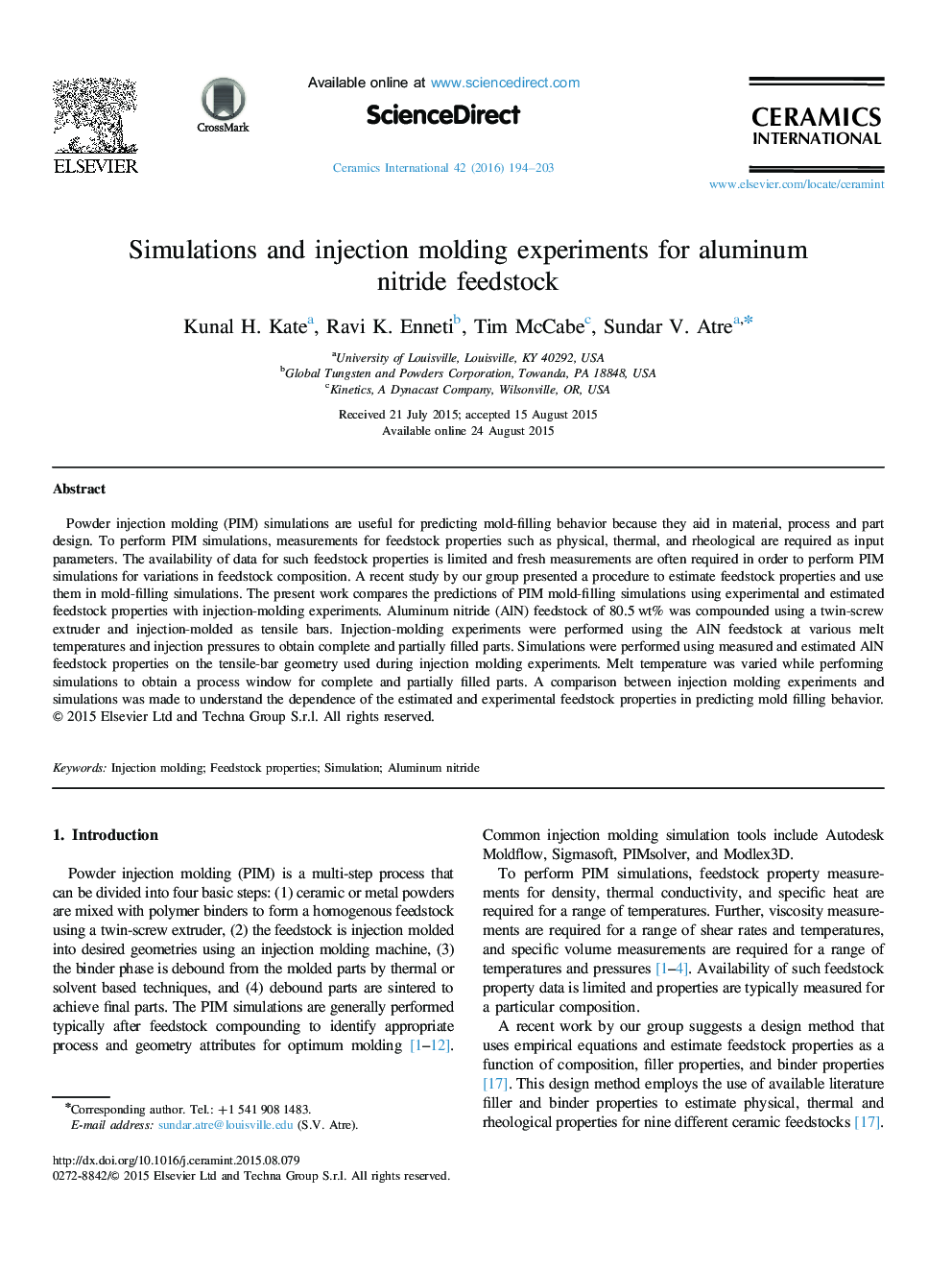| Article ID | Journal | Published Year | Pages | File Type |
|---|---|---|---|---|
| 1459420 | Ceramics International | 2016 | 10 Pages |
Powder injection molding (PIM) simulations are useful for predicting mold-filling behavior because they aid in material, process and part design. To perform PIM simulations, measurements for feedstock properties such as physical, thermal, and rheological are required as input parameters. The availability of data for such feedstock properties is limited and fresh measurements are often required in order to perform PIM simulations for variations in feedstock composition. A recent study by our group presented a procedure to estimate feedstock properties and use them in mold-filling simulations. The present work compares the predictions of PIM mold-filling simulations using experimental and estimated feedstock properties with injection-molding experiments. Aluminum nitride (AlN) feedstock of 80.5 wt% was compounded using a twin-screw extruder and injection-molded as tensile bars. Injection-molding experiments were performed using the AlN feedstock at various melt temperatures and injection pressures to obtain complete and partially filled parts. Simulations were performed using measured and estimated AlN feedstock properties on the tensile-bar geometry used during injection molding experiments. Melt temperature was varied while performing simulations to obtain a process window for complete and partially filled parts. A comparison between injection molding experiments and simulations was made to understand the dependence of the estimated and experimental feedstock properties in predicting mold filling behavior.
